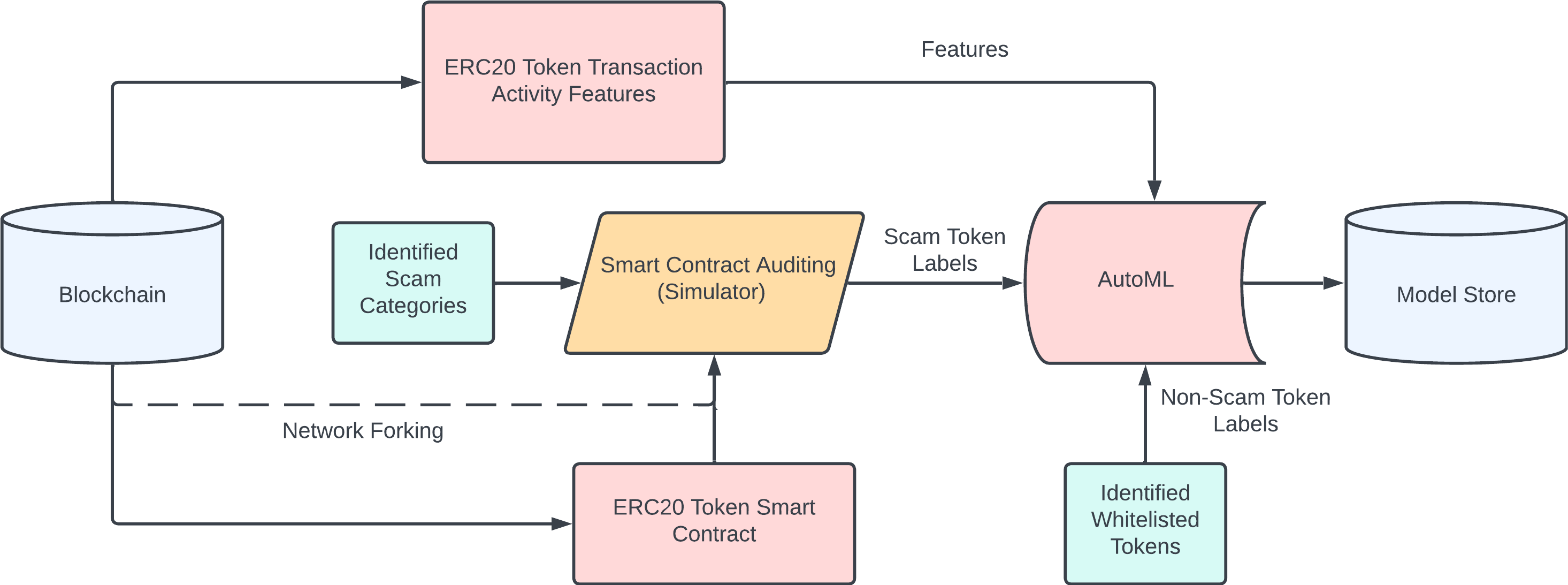
The Cryptocurrency Conundrum
The advent of blockchain technology, particularly Ethereum, has marked a revolutionary step in digital finance. Its ascent, however, is not without challenges. The anonymity inherent in blockchain transactions, while a boon for privacy, has also become a breeding ground for illicit activities. This scenario underscores the need for robust mechanisms to enhance transparency and security in cryptocurrency transactions.
SensusLabs: Pioneering Advanced Security Solutions
SensusLabs stands at the forefront of addressing these challenges. Our platform integrates machine learning (ML) with blockchain technology to scrutinise Ethereum wallet addresses. This initiative draws inspiration from academic research, particularly studies focusing on Ethereum address classification using transaction patterns. Our aim is twofold: identify high-risk wallets and provide real-time monitoring of crypto assets.
Architectural Overview
The architecture of SensusLabs is a harmonious blend of various technologies. We’ve adopted the MERN stack, later transitioning to TypeScript for improved scalability and maintainability. MySQL, replacing MongoDB, offers structured data management, crucial for handling vast amounts of transaction data. Real-time data feeds are sourced from Binance and CoinGecko, and our proprietary ML model is the linchpin for wallet classification.
Code Snippet: API Integration for Real-Time Data Feed
This JavaScript function exemplifies our integration with the Binance API, crucial for real-time price monitoring.

Reference: Block diagram similarly described by Coinbase
Methodological Insights
Our methodology involves a meticulous process of data extraction, feature selection, and model training. Transaction details such as sender and receiver addresses, value, and timestamps are extracted. This raw data undergoes preprocessing, where it’s transformed into a structured format suitable for ML models.
Code Snippet: Data Preprocessing with NumPy
Here, NumPy is used for data preprocessing, showcasing its utility in transforming raw data into a more analytically friendly format.
Model Training and Evaluation
The heart of our system lies in the ML models. We employ Random Forest, Gradient Boosting, and XGBoost classifiers, each undergoing rigorous hyperparameter tuning to ensure optimal performance. Evaluation metrics like accuracy, precision, and recall are meticulously analysed to determine the most effective model.
Code Snippet: Model Evaluation
This Python snippet illustrates the evaluation phase, where the RandomForestClassifier’s performance is assessed using standard metrics.
Video: SensusLabs graph visualiser demo
Conclusion: Forging a Safer Cryptocurrency Future
SensusLabs, through its innovative use of technology and ML, is at the vanguard of enhancing cryptocurrency security. Our approach, deeply rooted in both practical application and academic research, represents a significant stride towards a more transparent and secure digital currency ecosystem. The fusion of real-time data analysis, advanced ML techniques, and robust system architecture underscores our commitment to advancing the safety and integrity of cryptocurrency transactions.
Expanding upon SensusLabs’ methodology and architecture, this blog post provides a comprehensive view of our efforts to combat the challenges posed by cryptocurrency anonymity, underpinned by technical details and code snippets.
Visit: https://sensuslabs.com